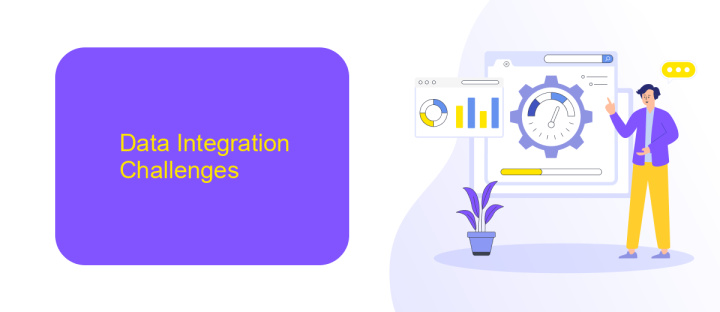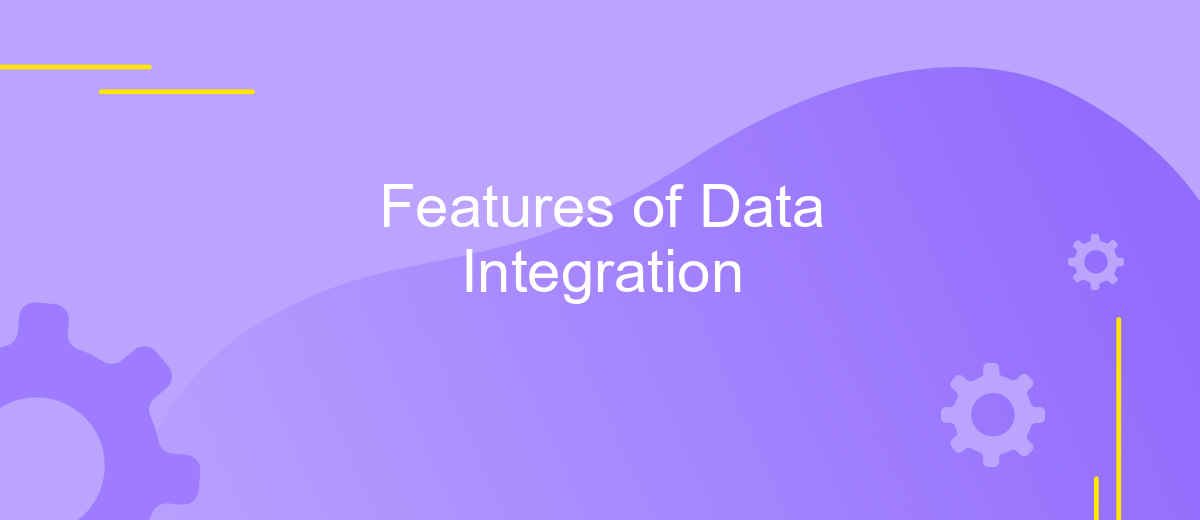Features of Data Integration
Data integration is a critical process in modern enterprises, enabling seamless data flow across diverse systems and applications. This article explores the key features of data integration, highlighting its importance in achieving data consistency, improving decision-making, and enhancing operational efficiency. By understanding these features, businesses can better leverage their data assets to drive innovation and maintain a competitive edge.
Introduction
Data integration is a critical process in today's data-driven world, enabling businesses to combine data from different sources into a single, unified view. This process is essential for making informed decisions, improving operational efficiency, and gaining a competitive edge. With the increasing volume and variety of data, effective data integration has become more challenging but also more crucial than ever before.
- Combining data from disparate sources
- Ensuring data quality and consistency
- Facilitating real-time data access and analysis
- Supporting business intelligence and analytics
- Enhancing data governance and compliance
As organizations continue to generate and collect massive amounts of data, the need for robust data integration solutions will only grow. By addressing the complexities of data integration, businesses can unlock the full potential of their data assets, driving innovation and achieving strategic objectives. Understanding the features and best practices of data integration is essential for any organization looking to harness the power of its data.
Data Integration Challenges

Integrating data from various sources presents a multitude of challenges. One of the primary issues is ensuring data consistency and accuracy across different systems. Disparate data formats and structures can lead to discrepancies, making it difficult to maintain a single source of truth. Additionally, data latency and real-time integration needs can complicate the process, requiring robust solutions to handle continuous data flows without significant delays.
Another significant challenge is data security and compliance. As data moves between systems, ensuring that sensitive information is protected and that all regulatory requirements are met becomes imperative. Furthermore, the complexity of integrating legacy systems with modern applications can pose technical difficulties. Tools like ApiX-Drive can simplify this process by providing seamless integration capabilities, allowing businesses to connect various applications and automate data workflows efficiently. However, selecting the right tool and configuring it correctly requires careful planning and expertise to address these challenges effectively.
Benefits of Data Integration

Data integration is a crucial process for modern businesses, enabling them to unify disparate data sources into a cohesive, actionable format. By merging data from various systems, organizations can achieve a more comprehensive view of their operations, leading to improved decision-making and operational efficiency.
- Enhanced Data Quality: Integrating data helps in identifying and eliminating inconsistencies, ensuring that the information used for analysis is accurate and reliable.
- Improved Decision-Making: With a unified data set, decision-makers have access to more complete and timely information, allowing for better strategic planning and responses to market changes.
- Increased Efficiency: Data integration reduces the need for manual data entry and reconciliation, streamlining processes and saving valuable time and resources.
- Better Customer Insights: By combining data from various touchpoints, businesses can gain a deeper understanding of customer behaviors and preferences, leading to more personalized and effective marketing strategies.
- Regulatory Compliance: Integrated data systems make it easier to maintain and demonstrate compliance with industry regulations and standards, reducing the risk of penalties and legal issues.
Overall, data integration provides a solid foundation for leveraging data as a strategic asset. It not only enhances the quality and accessibility of information but also enables businesses to operate more efficiently and responsively in a competitive landscape.
Features of Data Integration

Data integration is a crucial aspect of modern data management, enabling organizations to combine data from various sources into a unified view. This process ensures that data is consistent, accurate, and accessible across different systems and departments. Effective data integration facilitates better decision-making and enhances operational efficiency.
One of the primary features of data integration is the ability to handle large volumes of data from diverse sources, such as databases, cloud storage, and real-time streaming. This capability allows organizations to leverage all available information to gain comprehensive insights. Additionally, data integration tools often include functionalities for data transformation, cleansing, and enrichment to ensure high data quality.
- Scalability to manage increasing data volumes
- Support for multiple data formats and sources
- Real-time data processing and integration
- Data quality management and validation
- Seamless data transformation and mapping
Moreover, data integration enhances data accessibility by providing a single point of access to integrated data. This accessibility is critical for analytics, reporting, and business intelligence activities, enabling stakeholders to make informed decisions based on holistic and up-to-date information. As a result, data integration is an essential component of any data-driven organization.
Data Integration Best Practices
Effective data integration requires a well-structured approach to ensure accurate and efficient data flow across systems. One best practice is to establish clear data governance policies, which define roles, responsibilities, and processes for data management. This helps maintain data quality and consistency across all integrated systems. Additionally, utilizing automated data integration tools like ApiX-Drive can significantly streamline the process. ApiX-Drive offers a user-friendly interface and robust features that simplify the configuration and management of data integrations, reducing manual effort and minimizing errors.
Another essential practice is to implement data security measures to protect sensitive information during integration. This includes using encryption, secure data transfer protocols, and regular security audits. Monitoring and maintaining the performance of data integrations is also crucial. Regularly reviewing system logs and performance metrics can help identify and resolve issues before they impact business operations. By following these best practices, organizations can ensure reliable, secure, and efficient data integration, ultimately enhancing their overall data management strategy.
FAQ
What is data integration?
Why is data integration important for businesses?
What are the common challenges in data integration?
How can automation tools help in data integration?
What should be considered when choosing a data integration tool?
Time is the most valuable resource for business today. Almost half of it is wasted on routine tasks. Your employees are constantly forced to perform monotonous tasks that are difficult to classify as important and specialized. You can leave everything as it is by hiring additional employees, or you can automate most of the business processes using the ApiX-Drive online connector to get rid of unnecessary time and money expenses once and for all. The choice is yours!

